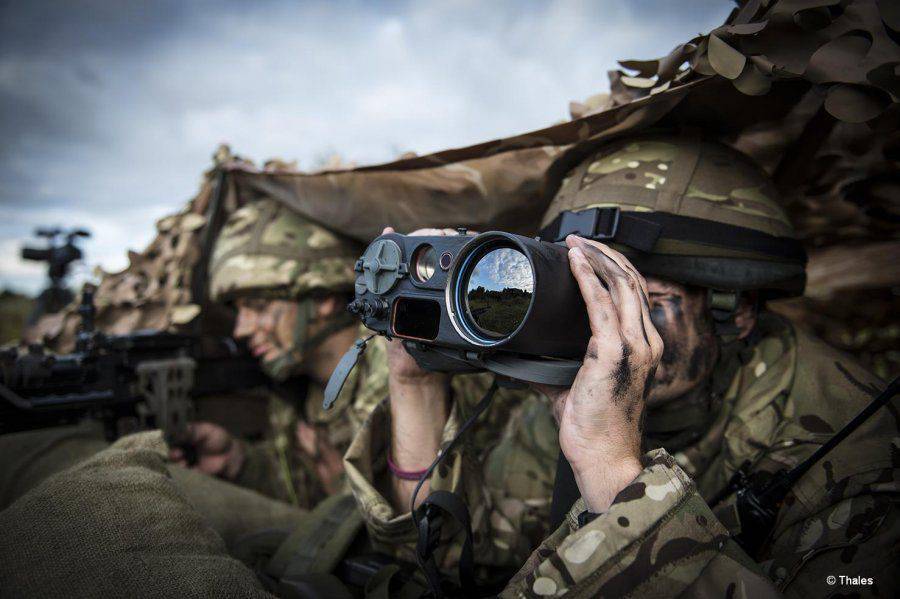
Binoculars - an important element of fighter equipment, especially needed commander, scout and partisan. Just watching through the optics allows us to estimate the area, to collect the necessary amount of data about a particular important enemy targets, not approaching it at a dangerous distance.
Now the market there are a lot of models of field binoculars. The choice depends only on the purse. Well, of course, We need a minimum set of knowledge for, not to take a pair of binoculars, completely useless in combat ...
FEATURES BINOCULARS : GENERAL INFORMATION.
For, to choose the right field glasses, necessary, At first, represent, what tasks you have to perform with him, and secondly - to navigate the basic characteristics of binoculars. Consider them in detail.
Optimal magnification for field binoculars - 6-8 multiple. In some cases,, when you need a bigger increase, used 8-10 fold binoculars. Beyond this observation is hampered by hand shake, and the need to use a tripod. There are binoculars with variable multiplicity ("Zoom"), but the device is more complicated than ordinary.
The basic optical characteristics of binoculars, along with its multiplicity, They are the diameter of the exit pupil, transmissivity, holiness, line of sight, and removing the exit pupil.
Exit pupil diameter - an important feature of binoculars. simple words, This light spot, which is reflected on a piece of paper, when we put it to the eyepiece aimed at the light binoculars, within the flange. Working distance - the distance from the eyepiece, where the eye sees a clear image. Binoculars are designed for the direct approach of the eye to the eyepiece and the length of the working length of their small: 10-15 mm, sometimes up 18-20 mm. In the latter case, binoculars designed for use them in glasses or mask. The diameter of the exit pupil can be calculated, dividing the lens diameter (always indicated after X sign) increase. So, to 8x40 binocular exit pupil diameter is 5 mm.
Transparency factor is called the device the ability to pass light rays. The more complex the device, the greater the loss of light in it. transmittance denoted in decimal fraction. for example, at loss 30 % Light transmittance is 0,7. lenses that is used to increase transmission coefficient.
Aperture determines the brightness of the image, produced on the retina when viewed through the binoculars, compared with the observation with the naked eye. The larger the diameter of the exit pupil of the binoculars, the higher the aperture ratio. In practice, the square of the aperture ratio denotes the exit pupil diameter. for example, 6x30 binocular exit pupil is equal to 5 mm, a svetosila, respectively, 25. The larger the aperture, the better the chances for binoculars in the twilight.
To avoid additional losses in image illumination, necessary, that during operation the diameter of the exit pupil of the binoculars is not less than the diameter of the pupil of the eye. The magnitude of the pupil of the human eye varies depending on the ambient light. The diameter of the human pupil is from 2,5-3 mm in bright light, to 7-8 mm in dusk and darkness.
Field of view - is a sector of space, visible in the instrument. Often, the field of view is not designated degree angle, and the width of the segment being viewed at a certain distance.
holiness, and the multiplicity of the field of view of binoculars are closely interrelated. It is impossible to change one of these options, without changing the other. Ceteris paribus multiplicity increase will decrease the field of view and aperture. obviously, that for observation at dusk fit binoculars with lower magnification.
There are two layout schemes binoculars, depending on the optical design arrangements: "Porr" and "Rufus" ("roof"). Binoculars with "Porro" system are easily recognizable form - the distance between the lenses have more distance between the eyepieces. They have better ductility, ie the transfer of spatial depth and terrain. Binoculars with "Ruth" -prizmami each lens and the eyepiece of the telescope axis are on the same. This makes it possible to achieve compactness, but it takes plasticity.
Military binoculars are provided with angle measuring grid. This glass plate with graduations, placed in one of the optic tubes, custom. It allows you to determine distances on the ground. The domestic division of small binoculars goniometric grid anyway 5 thousandth, big - 10. In foreign binoculars used by other units - nice (thousand), meaningfully close to the thousandth.
Focusing binocular eyepieces may be separate or central. In the first case, the total for the two eyepieces handwheel located at the swivel pipe, in the second case configuration is performed separately for each rotation of diopter ring eyepiece. Separate focus is more characteristic for military binoculars, tk. construction at the same time it becomes easier and stronger.
In some advanced models the binocular housing inside is filled with nitrogen to prevent fogging during rapid temperature changes,.
Based on the above and in line with the objectives, which are supposed to be solved with the help of binoculars, picked up the binoculars from optimal performance. For continuous wear in the field need binoculars weighing not more than 1 kg. At the same time to recognize distant objects multiplicity binoculars should be at least 6 x. At the same time, a multiplicity 8-10 watching with hands it will be significantly impeded.
When viewed at dusk and in poor lighting conditions, the aperture ratio of the binoculars should be at least 25, and preferably above. The increase in the lens diameter would entail an increase in the size and weight of the binoculars. 7x50 binoculars will be a limit on the size and weight for use in the field.
can say, that binoculars 6x30, 7x35, 8x40 are the most versatile devices. But we have to sidestep any priority characteristics, if necessary. for example, if the observation is most likely to happen during the day, but we have to consider sufficiently distant objects, the more appropriate choice of 8x binoculars with objective diameter 30-40 mm, or even binoculars 10h30 or 10h42. When observing at dusk, conversely, need binoculars, wherein preference is given luminosity. Optimal in this case will be 6x42 binoculars, 7h42, 7x50. When you need to work in harsh conditions have to compromise on weight and size of the binoculars, choosing a shockproof rubberized casing in waterproof performance. With the same purpose, with some damage usability, central focusing prefer an independent focus of each eyepiece.
There are special types of binoculars: with built-in compass, with a laser rangefinder, binoculars with image stabilization, night vision binoculars. They are designed to solve problems rather narrow.
Summing up, formulate requirements to a good army binoculars: strong shock-resistant housing, with a waterproof and nitrogen-filled; low weight, in any case, not more than 1 kg; wide field of view (from 120 m of 1000 m); high luminosity; good optics; Separate focus eyepieces; additional functions (rangefinder grid, buoyancy and other).











